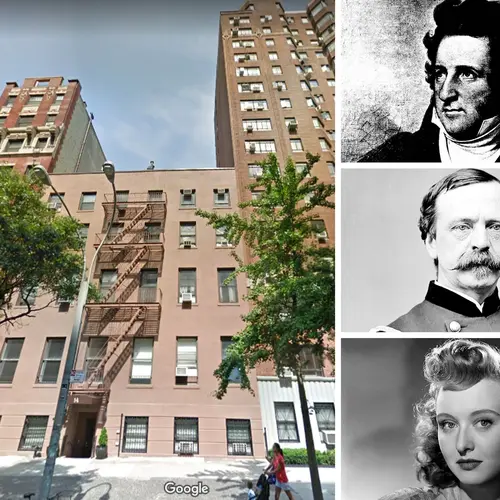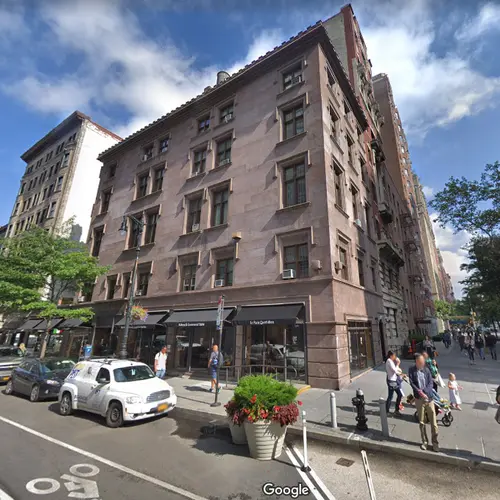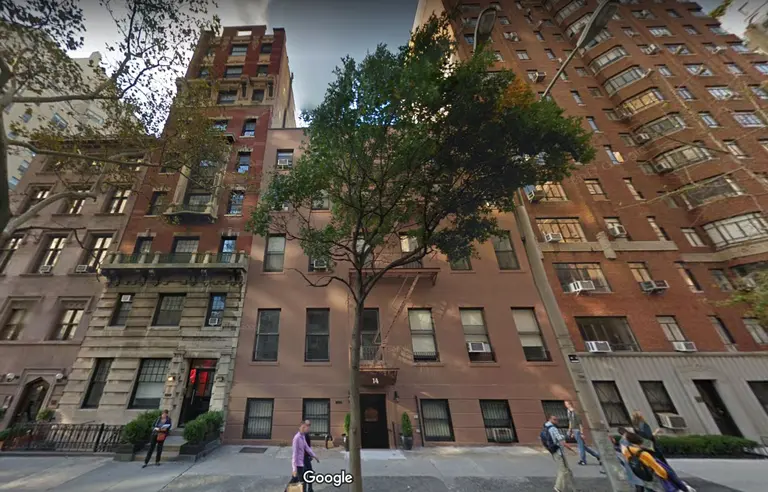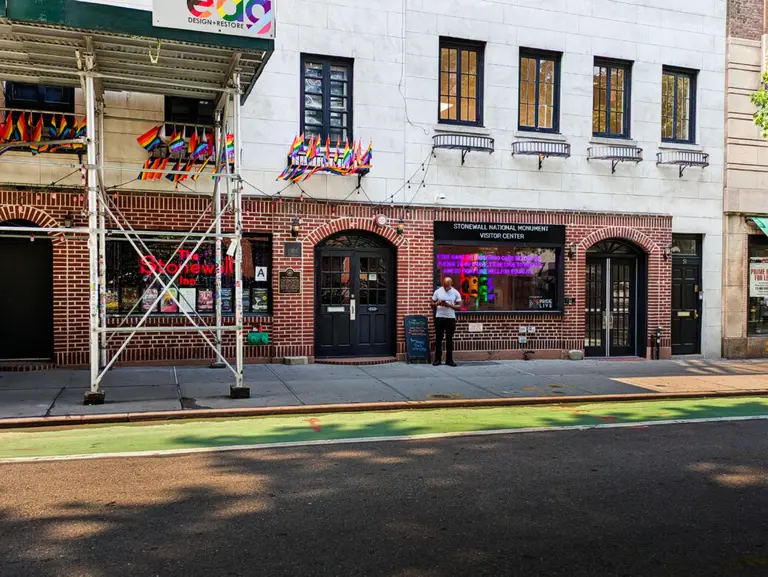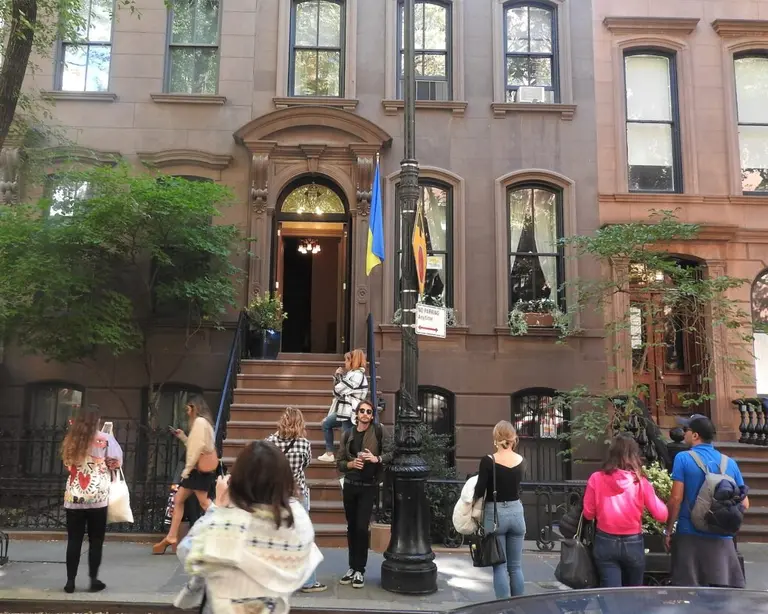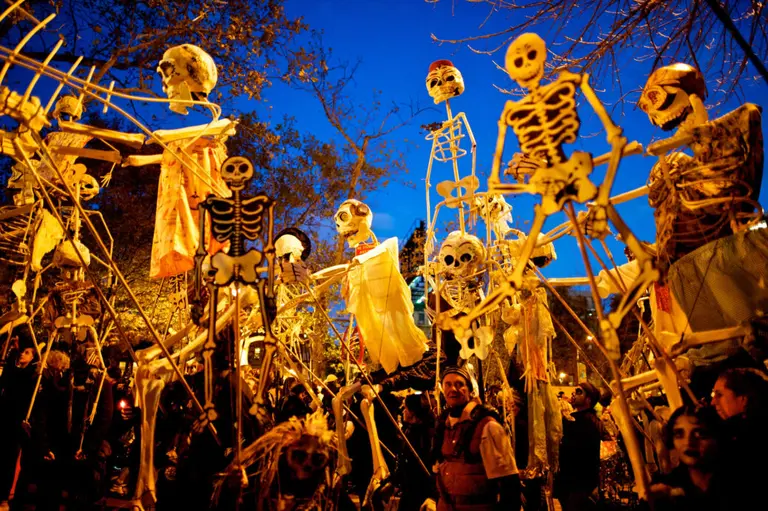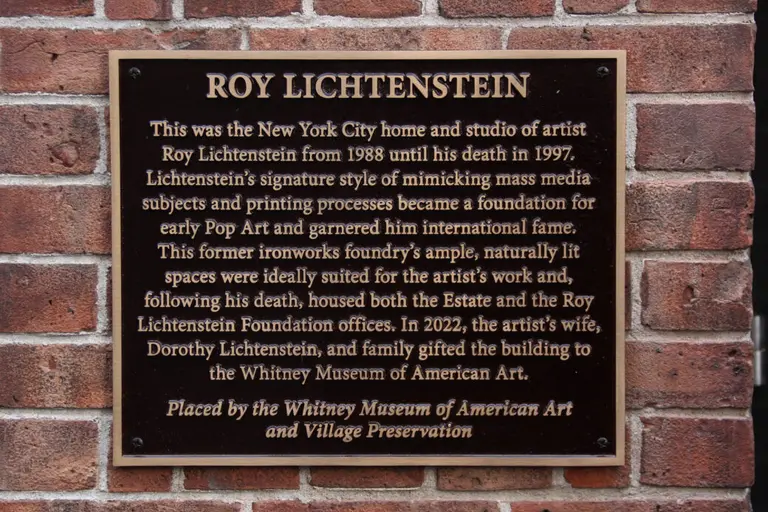From Civil War generals to Oscar winners: 7 historic figures who called 14-16 Fifth Avenue home

Streetview of 14-16 Fifth Avenue, Map data © 2020 Google; Painting of Henry Breevort via public domain, Photo of General Daniel Edgar Sickles courtesy of the Library of Congress, and photo of Celeste Holm via public domain
Madison Realty Capital filed plans last month to demolish 14-16 Fifth Avenue, a five-story apartment building constructed in 1848, and replace it with a 244-foot-tall tower. Because it is located within the Greenwich Village Historic District, it can only be demolished if the city’s Landmarks Preservation Commission rules that the building itself is of no historic or architectural merit, and does not contribute to the character of the district (the public hearings where this would be debated and decided have not yet been scheduled). What may seem like a nondescript apartment building actually has an incredibly rich and varied history. Throughout its 170-year history, 14-16 Fifth Avenue was home to Civil War generals, Gold Rush writers, Oscar-winning actors, railroad magnates, pioneering industrialists, inventors, and politicians. What follows is just some of the history behind this easily-overlooked lower Fifth Avenue landmark.
1. Henry Brevoort, real estate scion & patron of the arts
The structure at 14-16 Fifth Avenue was originally built as two separate Gothic Revival townhouses at a time when this stretch of Lower Fifth Avenue was the most prestigious address in New York. It was built by Henry Brevoort Jr., scion of the Brevoort family which owned much of the land and built many of the buildings in this part of Manhattan. So powerful was Henry Brevoort Sr. that he is the reason why Broadway bends to the northwest at 10th Street – to avoid impeding upon what was then his orchard, and is now the home of Grace Church.
The younger Brevoort wished to be as influential and impactful as his father and did so by becoming a great patron of the arts, among other ways. Known for his close association with writers Washington Irving and Sir Walter Scott, he also built one of New York’s most impressive mansions as his home just a half block to the north of this site at 24 Fifth Avenue. He soon transformed lower Fifth Avenue into one of the most desirable thoroughfares in New York by building a series of houses in the newly fashionable Gothic Revival style, of which Nos. 14 and 16 were two. The homes cemented the street’s reputation as the center of New York society in the mid-19th century.
2. Isaac Merritt Singer, industrialist & inventor
Singer, the great innovator of sewing machine technology and the founder of the Singer Sewing Machine Company, one of the first American multi-national businesses, bought No. 14 Fifth Avenue around 1859 for himself, his common-law wife Mary Ann Sponsler, and their children. Singer revolutionized both commercial clothing manufacturing and home sewing with his mass-produced sewing machine. Singer had developed and patented a couple of machines prior to patenting his own sewing machine design, forming the I.M. Singer Company in 1851.
Seeing the potential of marketing the sewing machine not just to industry but to the burgeoning middle class, he created a sewing machine for the home at a cost of $125. This was still out of reach for the average American though, prompting the company to set up a rent-to-own program, unheard of for its day. This spurred sales significantly. In 1858, the company had sold 3,594 machines, whereas by 1861 sales were over 16,000. With the sharp rise in income, Singer was able to develop mass-production methods and utilized the technique of interchangeable parts, an innovation first employed in America in the manufacture of muskets for the War of 1812. This brought the cost of production down considerably and therefore the cost to the consumer. By 1876, the Singer Company sold 262,316 machines, reportedly twice as many as their nearest rival.
3. General Daniel E. Sickles, Civil War general
An American politician, soldier, and diplomat, Sickles was one of the Civil War’s most prominent political generals, recruiting the New York regiments that became the Excelsior Brigade in the Army of the Potomac. He was awarded a medal of honor for his actions at the Battle of Gettysburg and gained fame in later years for spearheading the drive to preserve the Gettysburg battlefield as a federal monument. Sickles was the corporation counsel of New York, a U.S. congressman, and appointed the U.S. minister to Spain.
He may be best remembered however as the first person to ever use and be acquitted of murder based upon the “temporary insanity” defense. In 1859, he murdered Philip Barton Key II, the district attorney of Washington D.C. and son of Francis Scott Key, who was having an affair with his wife. Adding to the brazenness of the crime, it took place in Lafayette Square, directly across the street from the White House. After his acquittal, Sickles reconciled with his wife. Sickles lived at 14 Fifth Avenue from 1881 to 1883, after he returned from his post in Spain.
4. Charles E. Strong, jurist & philanthropist
Strong lived at 14 Fifth Avenue between 1885 and 1894. He was the chief of the oldest law firm in the United States, then known as Cadwalader & Strong, and an original member of the Association of the Bar. He was also a prominent figure in 19th century New York public and private charities, overseeing the establishment of the New York Medical College & Hospital for Women and Children, before which there was no place in New York City where a woman could study medicine.
The Cadwalader law firm, as it is known today, was originally started in 1792, soon representing such prominent clients as the Vanderbilts, Eliza Hamilton and John Jacob Astor, and Fulton’s steamboat company. In the 1870s, Charles E. Strong joined and led the firm, which during his tenure was at the forefront of utilizing the latest technology, including the typewriter and the telephone. Strong was equally prominent in his philanthropic pursuits. He served on a number of charitable boards including as a governor and later Chairman of the Society of the New York Hospital and Bloomingdale Asylum, a trustee of the Institution for the Blind, and a trustee of the Society Library.
5. George R. Blanchard, railroad tycoon
Blanchard, who was referred to in his New York Times obituary as “one of the most prominent railroad men in this country,” made his home at 16 Fifth Avenue in the 1880s. Blanchard was Vice President of the Erie Railroad, which connected New York City with Lake Erie and eventually points west, and played a particularly prominent role in New York’s growth and expansion in the 19th century.
Blanchard started as a clerk at 17 years old with the Cincinnati and Chicago Railroad and worked his way up the ranks. He served as Vice President of the Erie Railroad between 1874 and 1884, during the time he lived at No. 16 Fifth Avenue. After retiring from the Erie Railroad, he served as the Commissioner of the Central Traffic Association until 1896 and then led the Joint Traffic Association. He was then selected by the federal government to oversee railroad transportation of troops for the Spanish American War. Blanchard exerted a huge influence on railroad policy in the United States, lobbying for and against regulations as the industry grew exponentially and state and federal governments sought to both expand and control its operations.
6. Celeste Holm, Academy Award-winning actress & singer
Longtime screen and stage actress Celeste Holm lived at 14 Fifth Avenue in 1942 and 1943, after 14 and 16 Fifth Avenue, which had already been divided up into apartments, were combined into a single building with a rear addition including an elevator. During this time, Holm was cast and performed as the original Ado Annie in the landmark musical Oklahoma!, which premiered on Broadway on March 31, 1943. Holm had already appeared on Broadway, but this performance, in which she sang the unforgettable “I Cain’t Say No,” fueled her rise to fame. Holm’s performance was key to the play’s spectacular success, which was Richard Rodgers and Oscar Hammerstein’s first collaboration.
A box-office smash, Oklahoma! ran for an unprecedented 2,212 performances, later enjoying award-winning revivals, national tours, foreign productions, and an Oscar-winning 1955 film adaptation. In 1944, Hammerstein won a special Pulitzer Prize for Oklahoma!, which has since been credited with entirely transforming the period musical. Three years later in 1946, Holm made her film debut in the musical movie Three Little Girls in Blue. Enjoying a seven-decade career, Holm accumulated an array of honors, including an Academy Award for Best Supporting Actress for her role in the film Gentleman’s Agreement (1947) with Gregory Peck and John Garfield, as well as two other Oscar nominations for her performances in Come to the Stable (1949) and All About Eve (1950) with Bette Davis and Anne Baxter.
7. Miriam Bockman, reform politician
Bockman was the only woman to head the New York County Democratic organization and the first representative of the party’s reform wing to do so. She was elected to the position in 1977 as an ally of newly-elected Mayor Ed Koch, who came from the same Greenwich Village political club as she did, Village Independent Democrats. Her agenda as chief Democrat for Manhattan was to end the generations of Tammany practice of having political bosses meeting in smoke-filled rooms chose nominees for political and judicial seats, and instead have rank-and-file committee members and average voters do so.
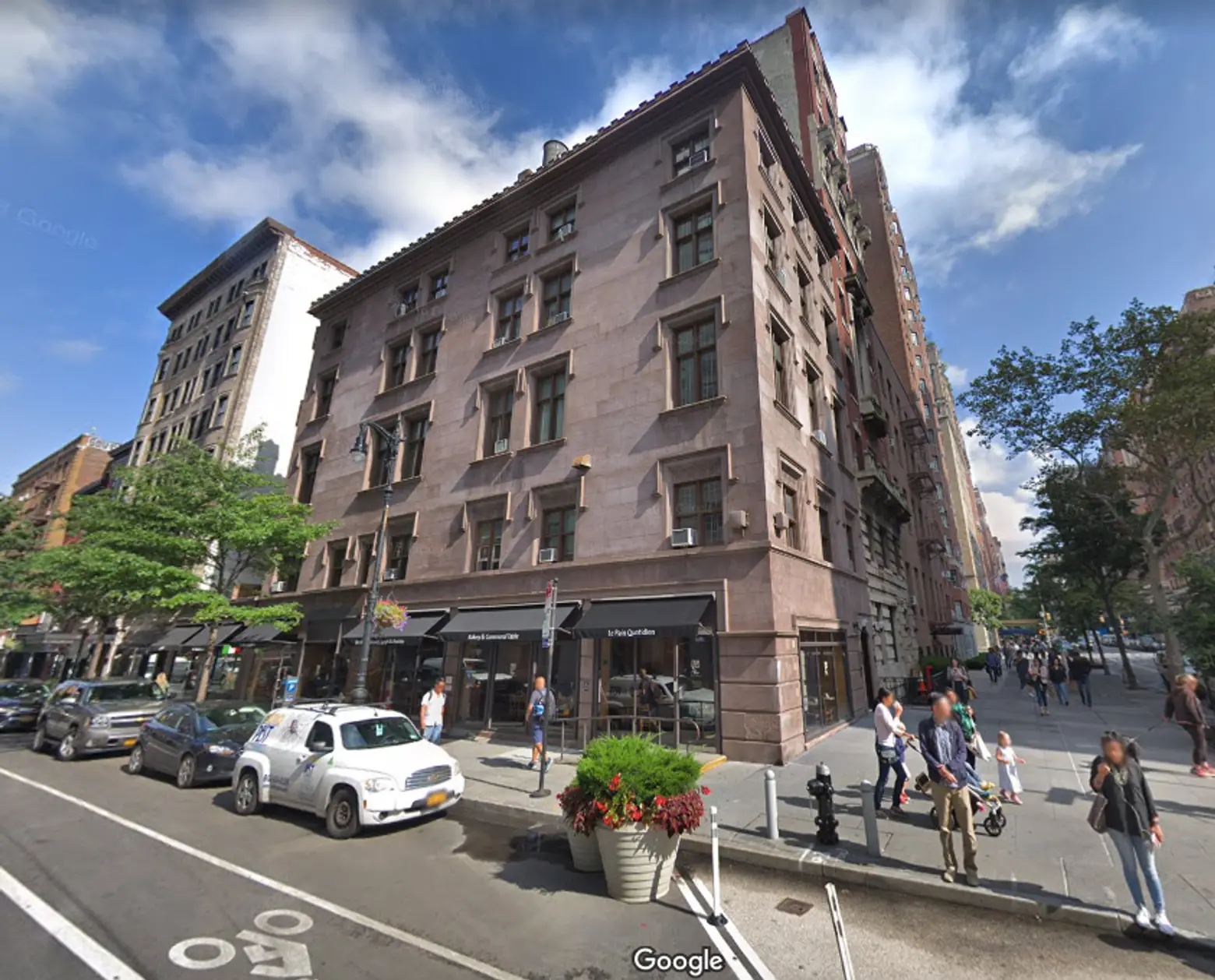
10 Fifth Avenue, Map data © 2020 Google
The 1936 renovation of 14-16 Fifth Avenue removed much of the original Gothic Revival architectural detail from the façade of the building, but this is neither unprecedented nor irreversible. Just down the block, 10 Fifth Avenue at the corner of 8th Street was the southernmost of the row of four houses built by Henry Brevoort in 1848 in the same romantic style. Like No. 14-16, No. 10 was stripped of much of its original architectural detail when it was landmarked in 1969 as part of the Greenwich Village Historic District, but in later years had much of that original detail restored. Such a fate is still possible for No. 14-16 if Madison Realty Capital’s demolition plan is not approved by the Landmarks Preservation Commission.
RELATED:
- Plans filed to replace historic Greenwich Village houses with a 244-foot luxury tower
- 31 literary icons of Greenwich Village
- The 10 most charming spots in the Greenwich Village Historic District
+++

This post comes from Village Preservation. Since 1980, Village Preservation has been the community’s leading advocate for preserving the cultural and architectural heritage of Greenwich Village, the East Village, and Noho, working to prevent inappropriate development, expand landmark protection, and create programming for adults and children that promotes these neighborhoods’ unique historic features. Read more history pieces on their blog Off the Grid
